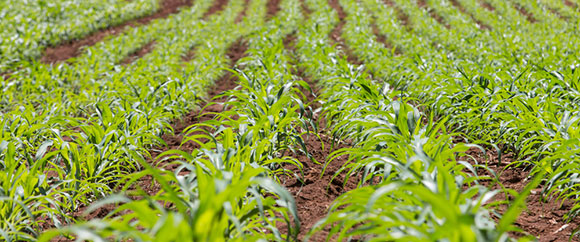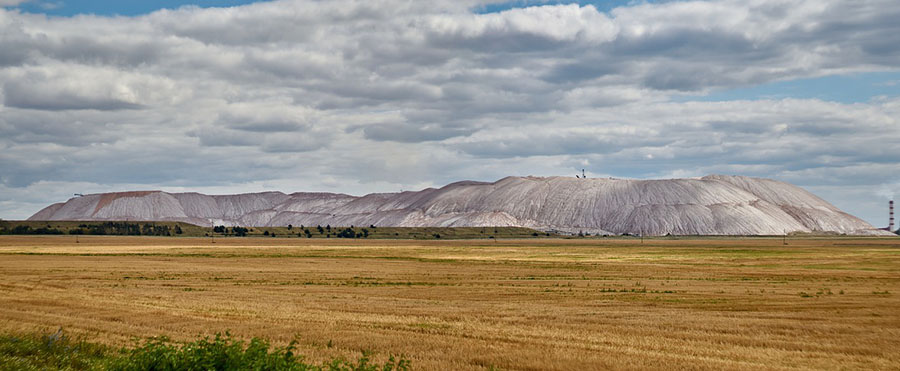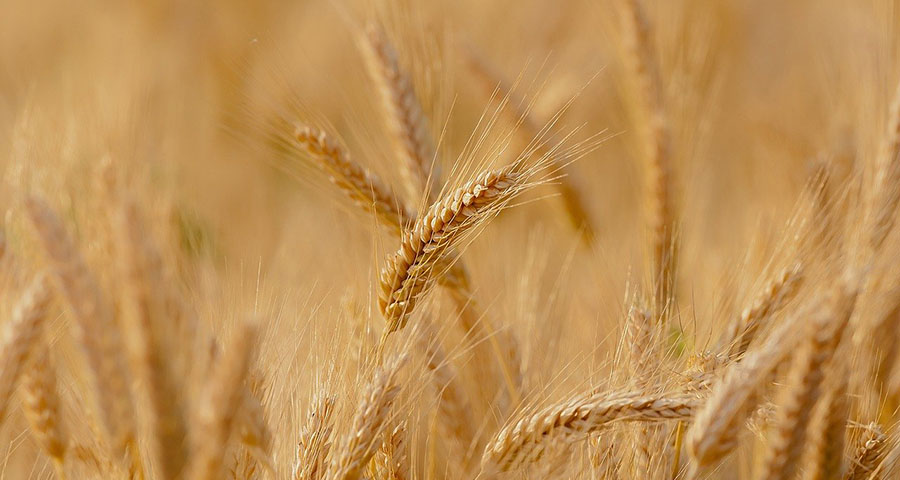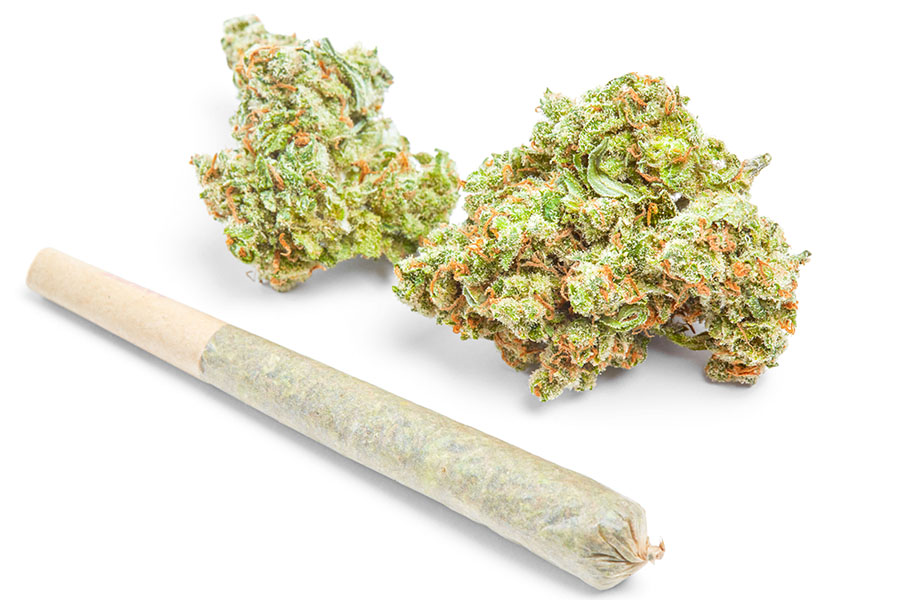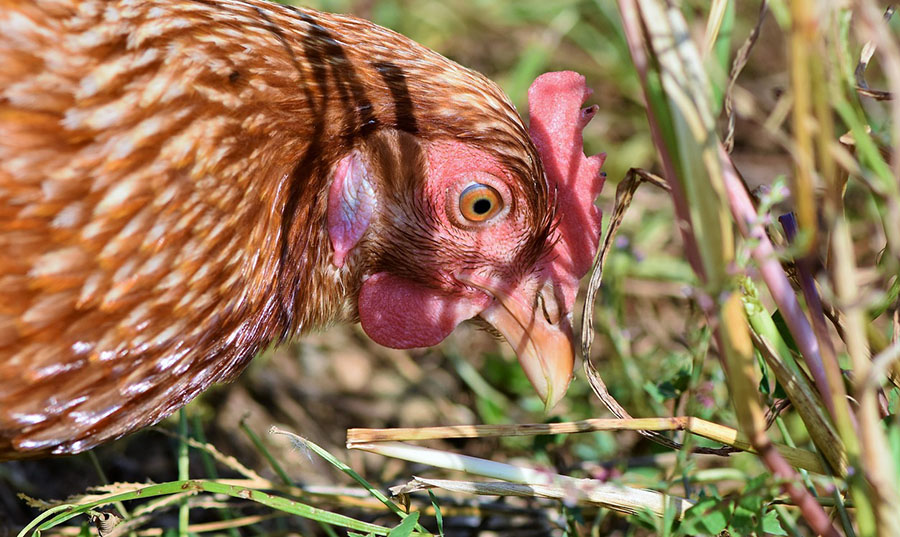The Energy Report: How have the collapses in the prices of oil and natural gas affected the fertilizer sector?
John Chu: Natural gas is an important feedstock for nitrogen-based fertilizers—up to 50% of the production cost. This means higher margins. Fuel and lubrication-related costs account for 10–12% of farmers' operating expenses. Lower fuel prices result in cost savings, which might be spent instead on fertilizers and other inputs. Lower gas prices should result in higher gasoline consumption, which in turn should result in greater ethanol demand and an increase in demand for the corn used to make ethanol.
TER: There were recent reports that Russia was planning export duties as high as 35% on fertilizers. What effect would this have on the industry?
"There's one particular company in the non-traditional agriculture sphere we like: Input Capital Corp."
JC: The rumors were unfounded. The Russian industry minister said that an export tax has no support and is not being discussed. In any event, we don't think an export tariff would have much of an impact. We would expect to see the Russian players continue to export most of their fertilizers to international markets—90% of potash, in particular. The Russian government has, in the past, floated the idea of an export tariff as a means to get domestic fertilizer suppliers to offer a meaningful discount to local farmers. And that is exactly what has happened; Russian fertilizer producers have agreed to a 33% discount for Russian farmers.
TER: Have sanctions affected the Russian fertilizer space?
JC: No. And we don't see them having an effect, especially on potash, because world supply is limited in terms of the different regions that can supply it.
TER: When we spoke last summer, you mentioned the possibility of Russian producer Uralkali (URKA:RTS; URKA:MCX; URKA:LSE) reforming its marketing alliance with Belaruskali, its Belarus equivalent. Did this happen?
JC: No. It seems they're growing further apart, with Uralkali accusing Belaruskali of disrupting the market with higher volumes and price discounts.
TER: We're hearing more about ever-closer political and economic bonds between Russia and China. Has this been reflected in the fertilizer market?
JC: Uralkali held a conference call Mar. 5, and revealed that 2015 potash production will be reduced about 15% due to a flood at one of its mines. The company doesn't expect to lose market share in the U.S., Brazil or Europe, but we could see it lose market share in China and Southeast Asia. Uralkali will allocate volume based on netbacks and higher margin customers. We understand that Belaruskali and some other suppliers have been funneling a lot more volume into China relative to what Uralkali had in the past.
TER: What is your 2015 projection for corn prices?
JC: We expect that lower acreage will be planted in the U.S. and other key regions, and that yield will decline from the record achieved in the U.S. last year. We expect overall demand to remain pretty firm, based on feed demand, ethanol demand and increased demand from China. As a result, we expect higher prices: about $4–4.25 per bushel.
TER: And your 2015 projection for fertilizers?
JC: We haven't put out a hard forecast, but I can give you a sense of direction. We expect a $15 or so per tonne rise for potash. We think China will have to pay that much more, and that will greatly influence the cost to the other major customers. On the nitrogen side, we expect an equivalent $15 per tonne increase, driven by some supply disruptions and solid demand. We expect a more modest increase in phosphates, about $5–10 per tonne.
TER: Why do you believe that, as you have said, fertilizers will "continue to act as a safe haven for resources funds"?
JC: Portfolio managers in the materials, mining and energy sectors tell us that corn and fertilizers are more stable and involve lower risk, with higher prices expected.
"Lower gas prices should result in higher gasoline consumption, which in turn should result in greater ethanol demand."
Fertilizer equities offer very solid dividend yields, anywhere from 2–4%. The capital expenditure (capex) programs for most of the senior fertilizer players in North America will fall starting in 2015, which suggests we'll see higher dividends and/or an increase in stock buybacks going forward.
TER: How have shares of the nitrogen companies performed compared to the potash companies?
JC: Agrium Inc. (AGU:NYSE; AGU:TSX) is up about 18% year-to-date. PotashCorp (POT:TSX; POT:NYSE) is down about 6%. CF Industries Holdings Inc. (CF:NYSE) is up over 14%. The Mosaic Co. (MOS:NYSE) is essentially flat. Agrium and CF are the main nitrogen players. PotashCorp is obviously a potash player, while Mosaic is more of a phosphate player.
TER: Agrium is your top pick of the majors. Could you expand on that?
JC: We like its exposure to nitrogen, which is by far the most stable and predictable of all the fertilizer nutrients. Nitrogen has had a long upward trend of demand growth over a 40-year-plus period. The same can't be said for potash or phosphate. As I mentioned earlier, lower natural gas prices should help the cost side for many nitrogen producers, and we believe that nitrogen prices have bottomed. And nitrogen has a better outlook in terms of supply. Nitrogen has seen several global supply outages, with 4–5% of capacity coming offline due to gas disruptions or gas availability, mechanical problems, or political problems such as the Ukrainian upheaval. Many of those issues are expected to continue into 2015.
"Fertilizer equities offer very solid dividend yields."
Agrium also has a retail division, which offers good stability relative to the wholesale fertilizer business. It's been hitting record levels of sales the last couple of years. We're definitely impressed with that. We're also seeing increased disclosure and transparency from this company. It gave full-year guidance for 2015, for the first time ever. Agrium could be in line for a valuation rerating.
TER: Agrium declared a $0.78 dividend last month. Can we expect higher dividends in the future?
JC: The company's original dividend formula was 25–35% of free cash flow. It recently increased that to 40–50%. We expect that as its capex program declines free cash flow will increase, resulting in a higher dividend. From the perspective of a base-case scenario of projected free cash flow from 2016 through 2021, we could see a $4–5 dividend per share. Based on the company's upside-case scenario, we could see a $5.90–7.40 per share dividend.
TER: Agrium announced an aggregate $1 billion ($1B) debt issue of 10-and 20-year debentures on Feb. 25. Is this troubling?
JC: No, it's just standard debt management.
TER: Among the companies you cover, how do you rate Agrium's peers?
JC: We cover PotashCorp. We're concerned about the potash side because of the possibility of oversupply. We had inventory restocking in 2014 and, as I've already noted, Belaruskali is flooding the market and offering price discounts. This is not good for the potash price outlook.
TER: PotashCorp just bought 9.5% of the Brazilian company Fertilizantes Heringer S.A. (FHER3.SA:Sao Paolo) for $55.7 million ($55.7M). Is this significant?
JC: It's certainly very interesting. It's a good move for the company because Brazil is one of the top three fertilizer consumption markets in the world, and we believe there's substantially more upside as to how much fertilizer the country can import and consume.
The Moroccan state fertilizer company OCP (Office Chérifien des Phosphates) bought a 10% stake in Heringer in January. This led to a long-term supply agreement whereby OCP will provide Heringer with phosphate-based products. I think PotashCorp is hoping they can do something similar with Heringer: a long-term supply agreement with a large fertilizer producer and distributor in one of the world's fastest-growing fertilizer markets.
TER: Your January industry update highlighted the emerging importance of the "higher-margin food ingredient sector." Could you explain what that is?
JC: It relates to the desire of health-conscience consumers for non-GMO, gluten-free, low-fat, high protein and high fiber diets. Food companies are responding to this and also moving toward higher efficiency, sustainability and having smaller carbon footprints.
"Portfolio managers in the materials, mining and energy sectors tell us that corn and fertilizers are more stable and involve lower risk, with higher prices expected."
To give an example, AGT Food and Ingredients Inc. (AGT:TSX) had traditionally processed crops by sorting, dehulling and cleaning. The problem with that approach was that it resulted in lower margins, in the high single-digits. The company is now taking a different approach. Instead of merely cleaning and sorting a crop, it is processing it even further, into pulses—food ingredients that food companies can then use. This approach results in much higher margins, double and perhaps even greater.
TER: Pulses are lentils, peas, beans and chickpeas? Is that correct?
JC: Foods like that, yes. These pulses are now being incorporated into healthier breads, chips, soups, peanut butter and even beverages. This is a huge opportunity for the food industry, the potential of which is still in the early stages.
TER: How do consumers know that food products contain higher value food materials?
JC: Through advertising. The healthier ingredients will be reflected in labeling, which will note lower saturated fat contents, higher fiber and protein contents, that the food is non-GMO, etc. Higher-value foods are getting a big push from big industry players. General Mills has introduced it into Cheerios. Whole Foods and Walmart are moving in this direction.
TER: AGT announced an $80M bought-deal financing in October. What does the company intend to do with that money?
JC: Some of it will pay down debt. Some of it will go toward fine-tuning its plant in Minot, North Dakota. The rest will be spent to convert existing excess capacity at its legacy facilities in Canada, the U.S. and Turkey to produce pulse ingredients, and add an additional pasta line in Turkey.
AGT stock was up 67% in 2014 on the basis of its food ingredient initiative and its joint venture with Ingredion Inc. (INGR:NYSE), a company with a $5.7B market cap.
TER: AGT stock rose to almost $30/share in February but has since fallen to about $27/share. Have we seen the end of its run?
JC: I don't think so. The company will report results in the next couple of weeks, and update the investment community on its progress in converting excess plant capacity to pulse ingredients. This conversion will essentially raise utilization rates and improve margins. We'll probably also hear final plans regarding the addition of a new pasta line. These data points down the road will provide much more clarity regarding AGT's expansion, and should help fuel continued momentum for the stock.
TER: Your industry update also highlighted the emerging importance of what you call "non-traditional agriculture."
JC: There's one particular company in this sphere we like: Input Capital Corp. (INP:TSX.V), which streams canola.
TER: Input recently announced its intention to consider streaming soybeans as well. What do you think of that?
JC: It's definitely a smaller market opportunity, but interesting nonetheless. There are about 50,000 canola farmers in Canada, but only about 6,500 soybean farmers. Most canola farmers are on the prairies, whereas 85% of soybean farmers are in Ontario. When Input presented farmers with the opportunity to stream canola, what the company heard from some farmers was that there was less of an interest in canola, and more in soybeans.
TER: Considering that soybeans are considered health food, and given the increasing popularity of Asian food, could the soybean market earn a significantly larger share of Canadian agriculture?
JC: I would expect both soybeans and corn to generate potentially larger market shares. And both deliver substantially better margins than wheat.
TER: How diversified could Input become?
JC: The company is somewhat limited by the nature of the market. Input's concept is built around futures contracts, which enable pricing visibility going forward. Soybeans are in the oil-seed complex with canola, and the prices are fairly well correlated with each other. Crops without futures contracts would be much harder to stream. For example, I don't think Input would look at wheat. Actually, I don't think the company is in a position to look beyond soybeans now, because there's so much untapped opportunity on the canola side.
TER: How do you rate Input in terms of the number of contracts it has signed, and in terms of its balance sheet?
JC: The company announced it had deployed $16.9M as of the quarter ending December. That was a very nice surprise, considering it is a seasonally weak period. The company signed 26 contracts, of which 24 were new. That demonstrates a growing confidence in streaming within the farming community. The January-to-May period is the time when Input will be busiest.
Input has got about $50M cash. No complaints there.
TER: Moving on to fertilizer juniors, the last time we spoke, you were quite keen on IC Potash Corp. (ICP:TSX; ICPTF:OTCQX) and its Ochoa project in New Mexico. What do you think of the company now?
JC: Potash is tougher market given the breakup of the Uralkali-Belaruskali alliance, especially for the juniors. The SOP (sulfate of potassium) market that IC Potash is involved in has actually performed well as compared to MOP (muriate of potassium). That suggests market support for a company like IC can be found, even though the funding environment is more challenging than it was 12–18 months ago. We still like IC.
TER: Let's talk about companies in the ancillary ag space.
JC: I'll mention three we like. The first is Ag Growth International Inc. (AFN:TSX), which is in the handling and storage business. AG was one of our top picks in 2014, and was up about 26% that year. The company announced a $90M public offering on Dec. 1, to partially fund its acquisition of Westeel from Vicwest Inc. (VIC:TSX). Westeel is involved in green storage and has a dominant market share in western Canada. This complements Ag Growth's core business, as grain handling and storage work hand-in-hand, and should help drive earnings in 2015.
"We expect overall demand for corn to remain pretty firm, based on feed demand, ethanol demand and increased demand from China."
Ag Growth has also demonstrated good growth in international markets—specifically in Ukraine, despite that country's difficulties. The company is looking at expanding its Brazilian operations. It is beginning with a small greenfield expansion, with the hope that it can become more substantial. We're pretty excited to consider what this company can do in Brazil, given its upside in storage and grain handling. We like this name for 2015 and beyond.
TER: And the other two companies are?
JC: The other two are in transportation. The first is Cervus Equipment Corp. (CVL:TSX), a well-diversified company and a potential sleeper for 2015. It is the largest John Deere dealer in Canada, and has some exposure in Australia and New Zealand. It has also has an industrial transportation component, which is about a third of its business.
Cervus made several acquisitions in the second half of 2014, and these should help drive 2015 earnings growth. This might actually surprise some people, because the 2015 ag equipment environment will generally be troublesome. Fortunately, the company has good exposure to the used vehicles, parts and service sectors. If farmers aren't buying new equipment, they are likely to buy used equipment instead, which would help offset new equipment sales weakness. In addition, Cervus will further offset losses with its high-margin (higher than equipment sales) equipment servicing side.
Rocky Mountain Dealerships Inc. (RME:TSX) has a very strong brand name. Rocky is more Canada-based than Cervus—not as geographically diversified. But like Cervus, they also have exposure to used equipment and the higher-margin sales and service business.
We believe there's an opportunity for this company to become involved in the ongoing consolidation of the equipment industry and to expand into the U.S. with acquisitions there. We hope to see that happen. Once again, this is a challenging environment, but the Canada-based equipment players should do better because Canadian farming is expected to be down only 7% year-to-year in 2015, as compared to American farming, which is expected to be down 22%.
TER: To sum up, what are the best choices for investors in agricultural products?
JC: We like the nitrogen players rather than potash, and Agrium is our best bet for that sector. The market for healthier foods is expected to show a substantial increase, and therefore companies with a growing stake in that market will demonstrate higher margins, which in turn will lead to better visibility, more stability and, in time, higher valuations.
TER: John, thank you for your time and your insights.
 John Chu, CFA, is managing director of agri-industry institutional equity research at AltaCorp Capital Inc. He was previously senior vice president in agriculture and industrials research at Mackie Research Capital, and also worked for Scotia Capital and HSBC Securities. He holds a bachelor's degree with honors in economics from Queens University, and a master's degree in business administration from the University of Western Ontario.
John Chu, CFA, is managing director of agri-industry institutional equity research at AltaCorp Capital Inc. He was previously senior vice president in agriculture and industrials research at Mackie Research Capital, and also worked for Scotia Capital and HSBC Securities. He holds a bachelor's degree with honors in economics from Queens University, and a master's degree in business administration from the University of Western Ontario.
Read what other experts are saying about:
Want to read more Energy Report interviews like this? Sign up for our free e-newsletter, and you'll learn when new articles have been published. To see a list of recent interviews with industry analysts and commentators, visit our Interviews page.
DISCLOSURE:
1) Kevin Michael Grace conducted this interview for Streetwise Reports LLC, publisher of The Gold Report, The Energy Report, The Life Sciences Report and The Mining Report, and provides services to Streetwise Reports as an independent contractor. He owns, or his family owns, shares of the following companies mentioned in this interview: None.
2) The following companies mentioned in the interview are sponsors of Streetwise Reports: Input Capital Corp. Streetwise Reports does not accept stock in exchange for its services.
3) John Chu: I own, or my family owns, shares of the following companies mentioned in this interview: None. I personally am, or my family is, paid by the following companies mentioned in this interview: None. AltaCorp Capital is a market maker for the following companies mentioned in this interview: Agrium Inc. AltaCorp Capital was involved in an equity financing for Input Capital Corp. I was not paid by Streetwise Reports for participating in this interview. Comments and opinions expressed are my own comments and opinions. I had the opportunity to review the interview for accuracy as of the date of the interview and am responsible for the content of the interview.
4) Interviews are edited for clarity. Streetwise Reports does not make editorial comments or change experts' statements without their consent.
5) The interview does not constitute investment advice. Each reader is encouraged to consult with his or her individual financial professional and any action a reader takes as a result of information presented here is his or her own responsibility. By opening this page, each reader accepts and agrees to Streetwise Reports' terms of use and full legal disclaimer.
6) From time to time, Streetwise Reports LLC and its directors, officers, employees or members of their families, as well as persons interviewed for articles and interviews on the site, may have a long or short position in securities mentioned. Directors, officers, employees or members of their families are prohibited from making purchases and/or sales of those securities in the open market or otherwise during the up-to-four-week interval from the time of the interview until after it publishes.


